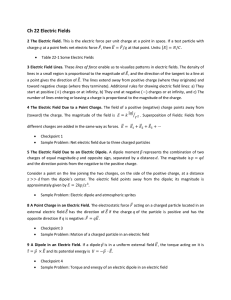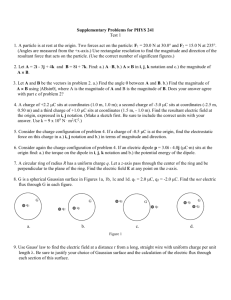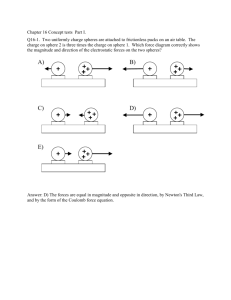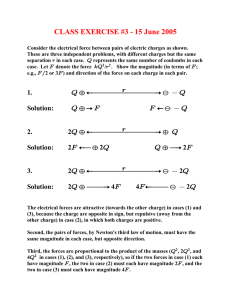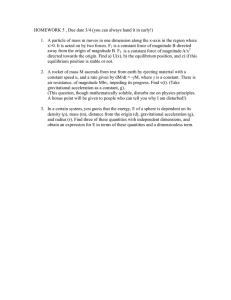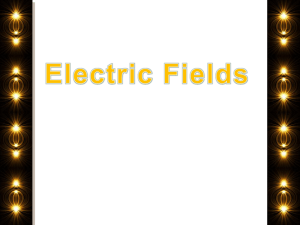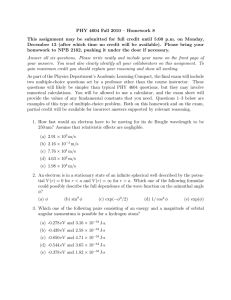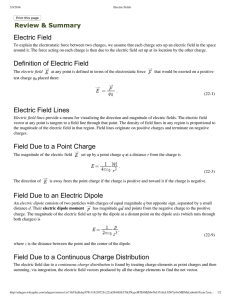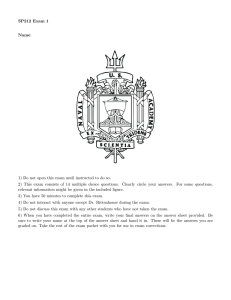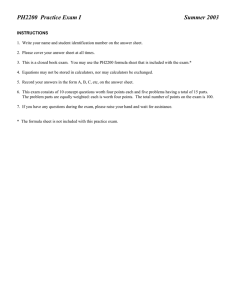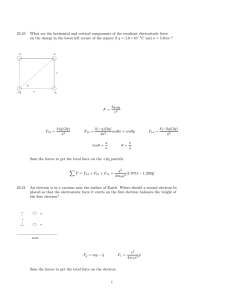4C QUIZZ #1
advertisement
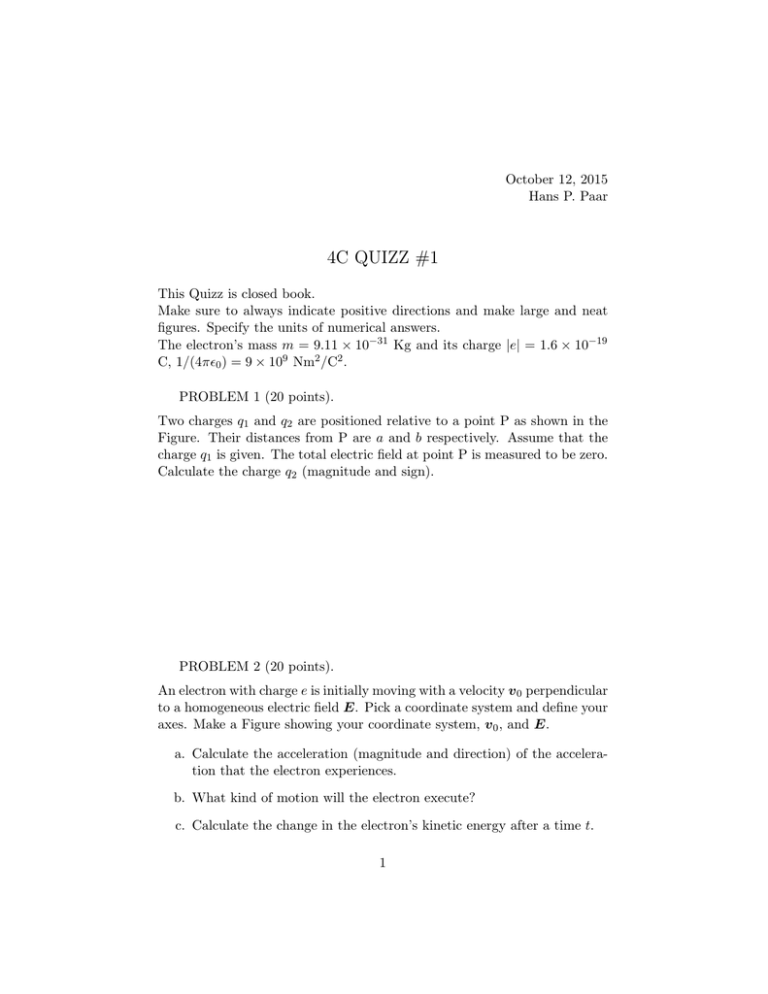
October 12, 2015 Hans P. Paar 4C QUIZZ #1 This Quizz is closed book. Make sure to always indicate positive directions and make large and neat figures. Specify the units of numerical answers. The electron’s mass m = 9.11 × 10−31 Kg and its charge |e| = 1.6 × 10−19 C, 1/(4π0 ) = 9 × 109 Nm2 /C2 . PROBLEM 1 (20 points). Two charges q1 and q2 are positioned relative to a point P as shown in the Figure. Their distances from P are a and b respectively. Assume that the charge q1 is given. The total electric field at point P is measured to be zero. Calculate the charge q2 (magnitude and sign). PROBLEM 2 (20 points). An electron with charge e is initially moving with a velocity v 0 perpendicular to a homogeneous electric field E. Pick a coordinate system and define your axes. Make a Figure showing your coordinate system, v 0 , and E. a. Calculate the acceleration (magnitude and direction) of the acceleration that the electron experiences. b. What kind of motion will the electron execute? c. Calculate the change in the electron’s kinetic energy after a time t. 1 PROBLEM 3 (20 points). A dipole with dipole moment p is initially positioned in a uniform electric field perpendicular to the electric field lines. An oberver rotates the dipole from 90 deg to 0 deg measured relative to the direction of the electric field. a. How much work does the observer do? Specify magnitude and sign. b. How much work is done by the electric field? c. If instead of rotating the dipole the observer translates the dipole in the direction of the electric field. How much work does she have to do? PROBLEM 4 (20 points). A spherical shell of insulting material carries a uniform volume charge density ρ. Its inner radius is R1 and its outer radius is R2 . At its center is a charge Q. There are three distinct regions: region I where r < R1 , region II where R1 < r < R2 , and region III where r > R2 . Make a figure showing this situation. a. Calculate the electric field (magnitude and direction) in region I. b. Calculate the electric field (magnitude and direction) in region II. c. Calculate the electric field (magnitude and direction) in region III. 2 d. Is the electric field continuous at the boudaries between region I and II and between regions II and III? Show that it is (not). e. Graph the value of the electric field as function of r. PROBLEM 5 (20 points). A rectangular volume, with length L much larger than it transverse size d, contains a charge Q at its center. The cross section of the volume is a square with sides d. Calculate the approximate electric flux through one of the four sides of the volume. EXTRA CREDIT PROBLEM (30 points) In problem 1, put a charge Q at point P where the electric field is zero and thus the force on charge is zero as well. Consider the charge displaced by a small amount ∆x. Calculate the force on the charge Q (direction and magnitude) as function of ∆x. Simplify your expression as much as possible using the fact that the force is zero when ∆x = 0. 3

